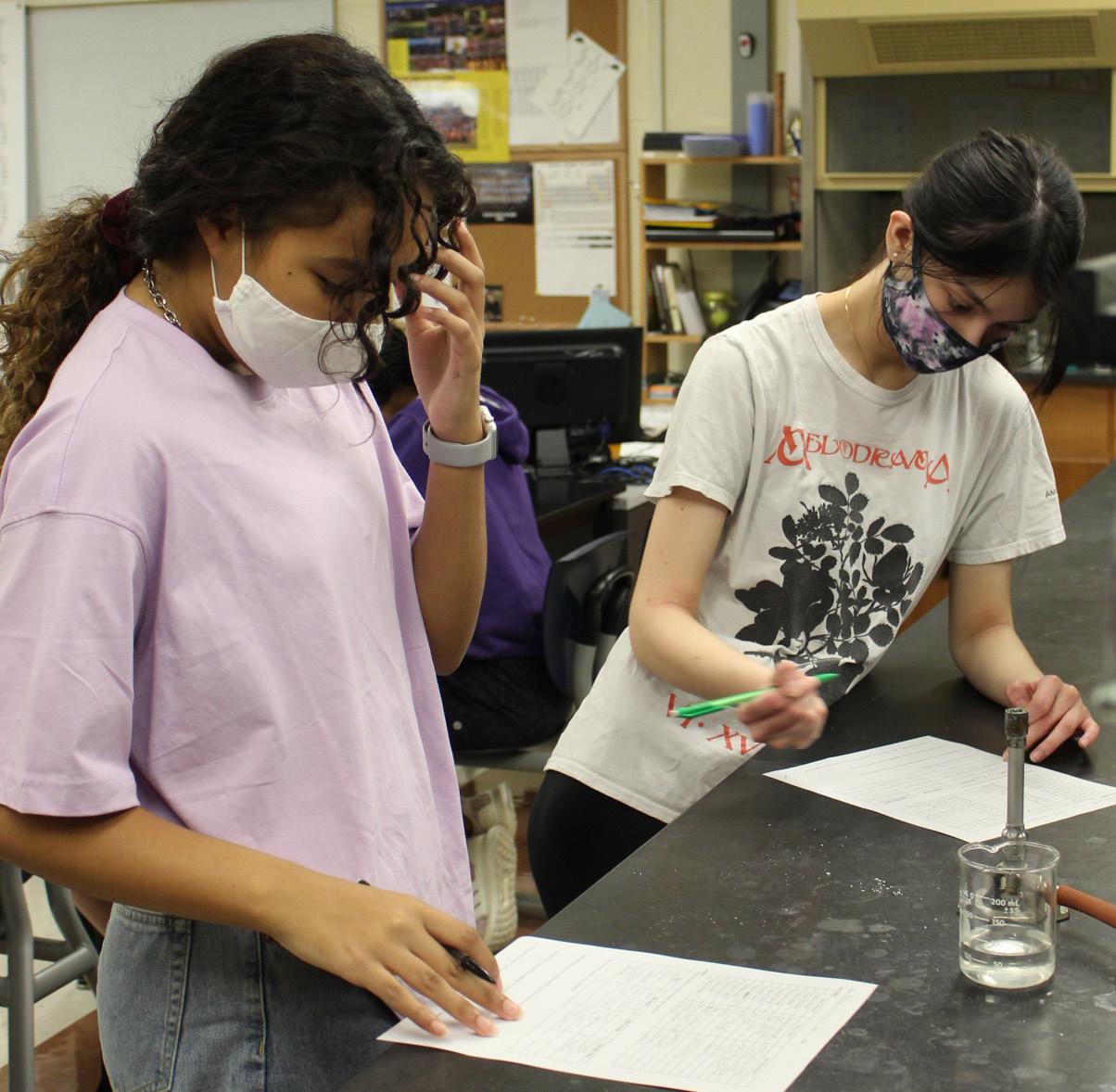
2 minute read
COVID-19 forces teachers to adapt cirriculum due to uncertain scheduling
By: Fletcher Smith
With the coronavirus pandemic touching almost every aspect of people’s lives, adjustments had to be made almost everywhere, and schools were no exception.
Advertisement
After a three week delay of the start of the school year, students started online with block scheduling, which technically allowed for a full curriculum, until Oct. 19, when students returned in-person for half block days. This schedule meant that students spent half as much time in each class as they would in a normal year, forcing teachers to adjust how they taught to allow for more at-home learning during the half of the day they were not in school. This adjustment, while very hard to navigate, did not take away much of the necessary curriculum required for Advanced Placement (AP) classes, says history teacher Teri Daugherty, but did change some of the usual things done in class. “The curriculum is dictated by [the] College Board and so we are tasked with teaching all of it,” Daugherty said. “I have eliminated group projects, and many of the additional activities outside of the textbook/direct curricula instruction in order to be able to teach the same required amount of curriculum as I would were it any normal year.”

Her Modern World History class is the same, eliminating group projects and activities that were usually used to enhance the curriculum. “We have really focused on teaching the standards that have been set by the state,” says Daugherty. “We still teach the same topics and curriculum, just have had to shorten the length of time spent in class on it. I miss doing many of the activities we normally do because they enhance what we are teaching.” Math teacher Tami Elsey faced the same problem, but had a little more freedom when setting up the curriculum.
“The district instructed the teachers to work in collaboration teams to choose the standards that were mandatory for each class,” says Elsey. However, some material that students may have missed out on due to the cancellation of the fourth quarter of the 20192020 school year needed to be added to the curriculum, which added to the amount needed to be taught, but should also be beneficial for students in the long run. “In the math department, we worked together with teachers who taught prerequisite courses to make sure kids didn’t have ‘big gaps’ in content in their learning,” says Elsey. “In math, leaving out big units of material would be hard on students down the road in future classes.”
photo by Olivia Pierce
The half-day schedule did not take much away from the necessary curriculum, but that does not mean learning has been conducted as usual, especially for students. “The half-day instruction has not changed the amount of material delivered, but it has forced students to be responsible for completing assignments, looking up answers when they are confused, and taking responsibility for their own learning,” says Elsey. However, the split classes caused by the halfday schedule have had some benefits for both teachers and for in-person learning. “I will say that time we do have allows us to get to know each kid better because class sizes are smaller,” says Elsey. “Behavior problems are virtually nonexistent as well. Also there are fewer class interruptions, so the time I have with students can really be used to teach and learn.”










